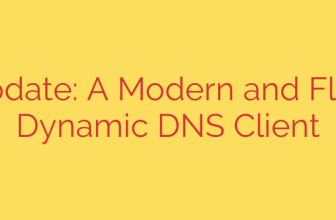
Protect Your Digital World: A Practical Guide to Modern Cybersecurity
In our hyper-connected world, the line between our physical and digital lives has all but disappeared. We bank, shop, work, and socialize online, creating a vast trail of personal and financial data. While this brings incredible convenience, it also opens the door to a growing number of sophisticated threats. Understanding how to protect yourself is no longer optional—it’s an essential life skill.
Navigating the world of cybersecurity can feel overwhelming, with new threats and complex jargon emerging constantly. The good news is that securing your digital life doesn’t require a degree in computer science. By understanding the core principles and adopting a few key habits, you can build a strong defense against the most common attacks.
Understanding the Modern Threat Landscape
Cybercriminals are constantly evolving their tactics, but many attacks rely on exploiting common human behaviors and technical vulnerabilities. To defend yourself, you first need to know what you’re up against.
- Phishing and Social Engineering: These attacks are designed to trick you into giving away sensitive information, like passwords or credit card numbers. You might receive an urgent-looking email from your bank, a text message with a suspicious link, or a direct message from a compromised social media account. The goal is to create a sense of panic or curiosity to make you act without thinking.
- Malware and Ransomware: Malware is a broad term for malicious software designed to disrupt or damage your computer. A particularly nasty form of malware is ransomware, which encrypts your files and holds them hostage until you pay a fee. Ransomware attacks can be devastating, leading to the permanent loss of precious photos, important documents, and critical business data.
- Credential Stuffing: After a major data breach, hackers often test stolen usernames and passwords on other websites. If you reuse the same password across multiple accounts, a breach at one company can compromise your security everywhere else.
Building Your Digital Fortress: Core Security Principles
A proactive approach to security is the best defense. By implementing the following best practices, you can significantly reduce your risk of becoming a victim.
Embrace Strong Password Hygiene: The era of simple, easy-to-remember passwords is over. Use a reputable password manager to generate and store unique, complex passwords for every single one of your online accounts. This single step can neutralize the threat of credential stuffing.
Enable Multi-Factor Authentication (MFA): Passwords can be stolen, but a second verification factor is much harder to compromise. Always enable multi-factor authentication (MFA) whenever it’s available, especially on critical accounts like email, banking, and social media. This means a hacker would need more than just your password to get in—they’d also need your phone or another physical device.
Keep Your Software Updated: Those software update notifications aren’t just for adding new features. They often contain critical security patches that fix vulnerabilities discovered by developers. Delaying updates leaves you exposed to known exploits that criminals are actively using. Make it a habit to install updates for your operating system, web browser, and other applications as soon as they become available.
Practice Smart Backups: To protect yourself from data loss due to ransomware or hardware failure, you need a solid backup strategy. Maintain regular, automated backups of your important files. For maximum protection, follow the 3-2-1 rule: have at least three copies of your data, on two different types of media, with at least one copy stored off-site (e.g., in the cloud or on a drive at a different location).
The Human Element: Creating a Security-First Mindset
Technology is only one part of the equation. The most secure systems can be undone by human error. This is why developing a security-conscious mindset is so important, whether for yourself or within an organization.
Continuous security awareness is non-negotiable. This means learning to recognize the signs of a phishing attempt, being skeptical of unsolicited requests for information, and understanding the value of the data you’re protecting. For businesses, this involves creating a culture where employees feel empowered to report suspicious activity without fear of blame. Everyone is a part of the security team.
The Rise of AI in Cybersecurity
The battlefield is changing with the advent of artificial intelligence. AI is a double-edged sword, revolutionizing both cyber attacks and defenses. Attackers are using AI to create more convincing phishing emails and develop adaptive malware. On the other side, security professionals are using AI to detect threats faster than humanly possible, identify patterns in massive datasets, and automate responses to attacks in real-time. Staying informed about these changes is key to understanding the future of digital safety.
Ultimately, cybersecurity is an ongoing process, not a one-time fix. By staying informed, adopting fundamental best practices, and cultivating a vigilant mindset, you can confidently navigate the digital world and protect what matters most.
Source: https://www.bleepingcomputer.com/news/security/cybersecurity-for-dummies-3rd-edition-ebook-free-for-a-limited-time/








